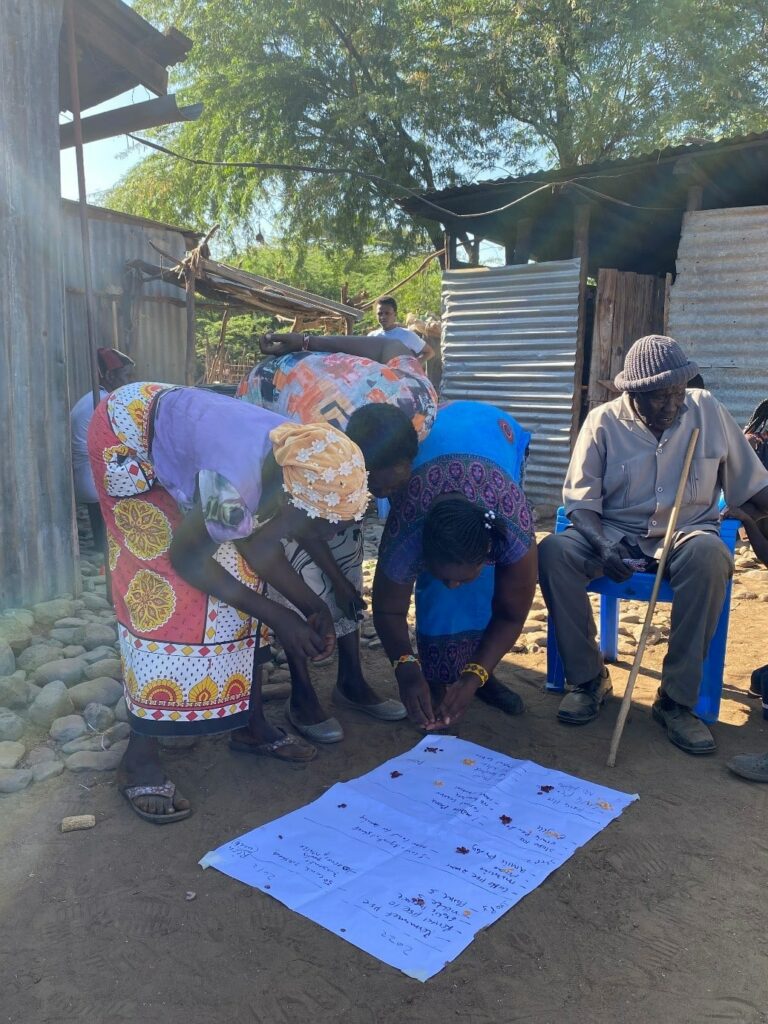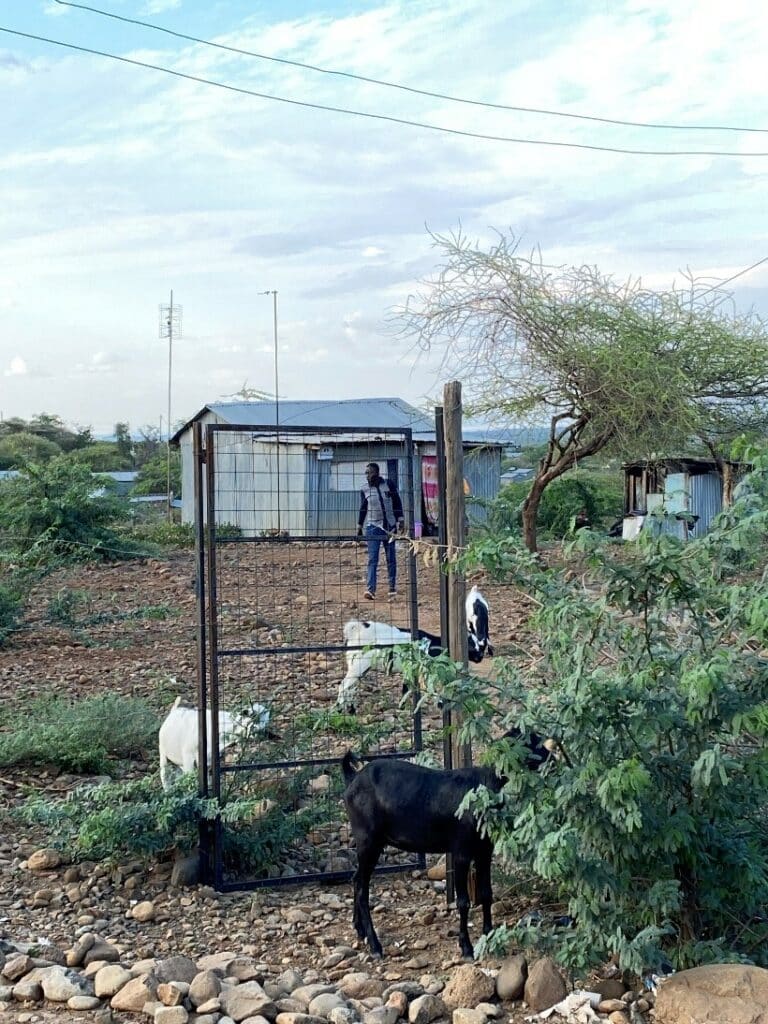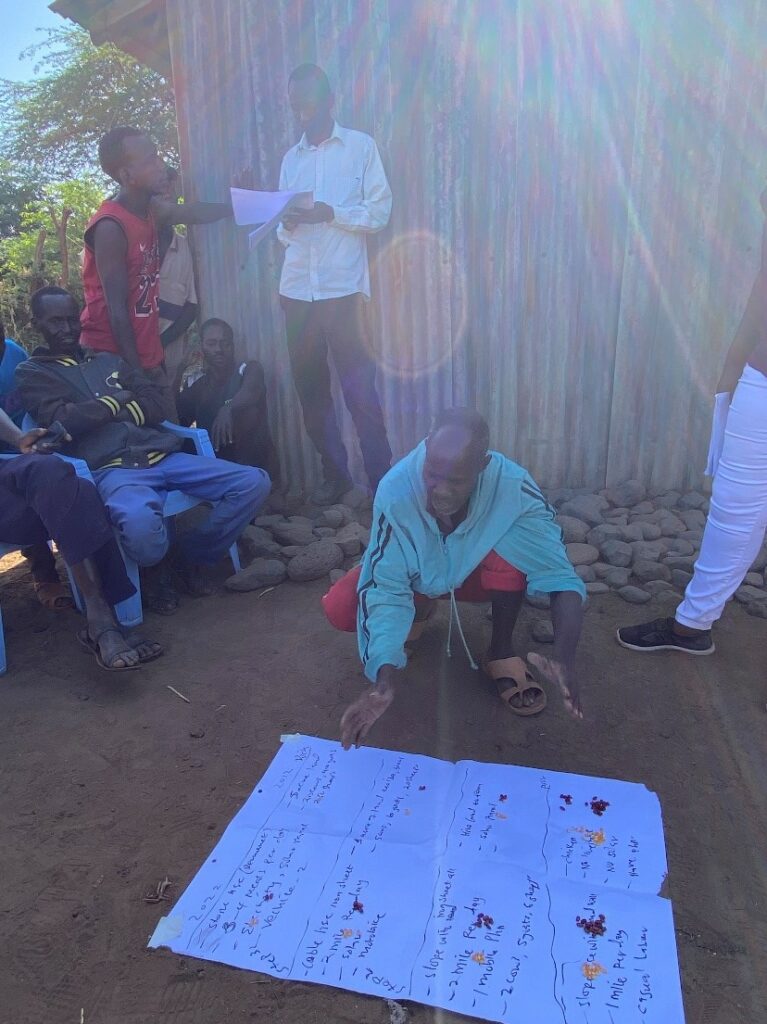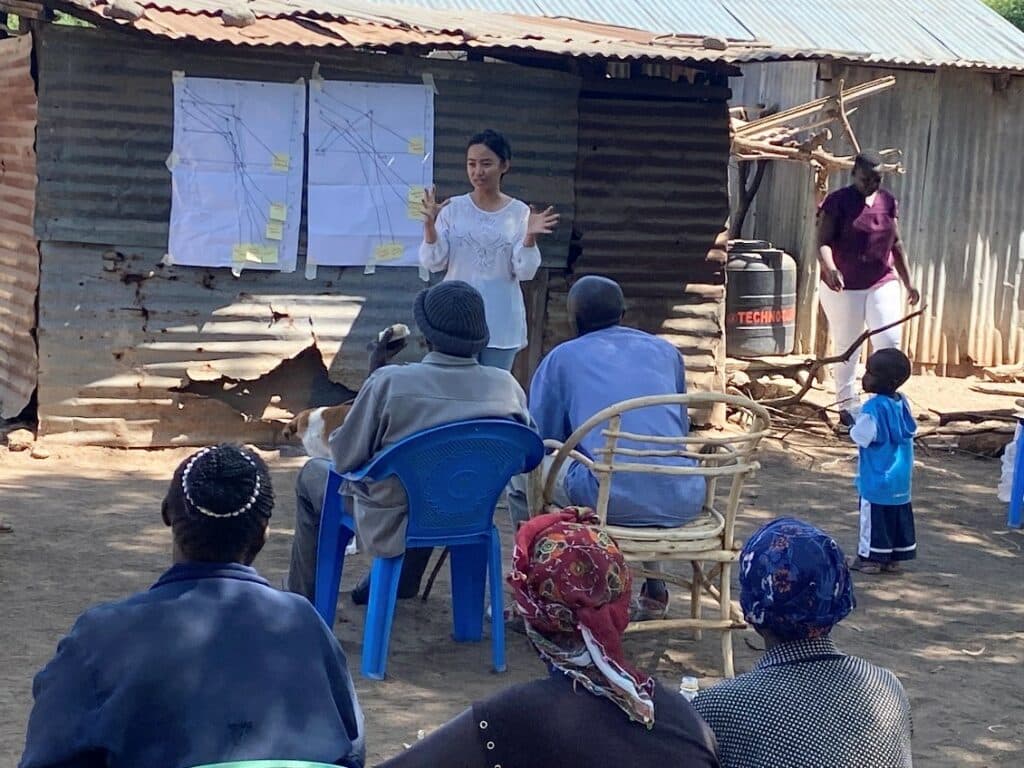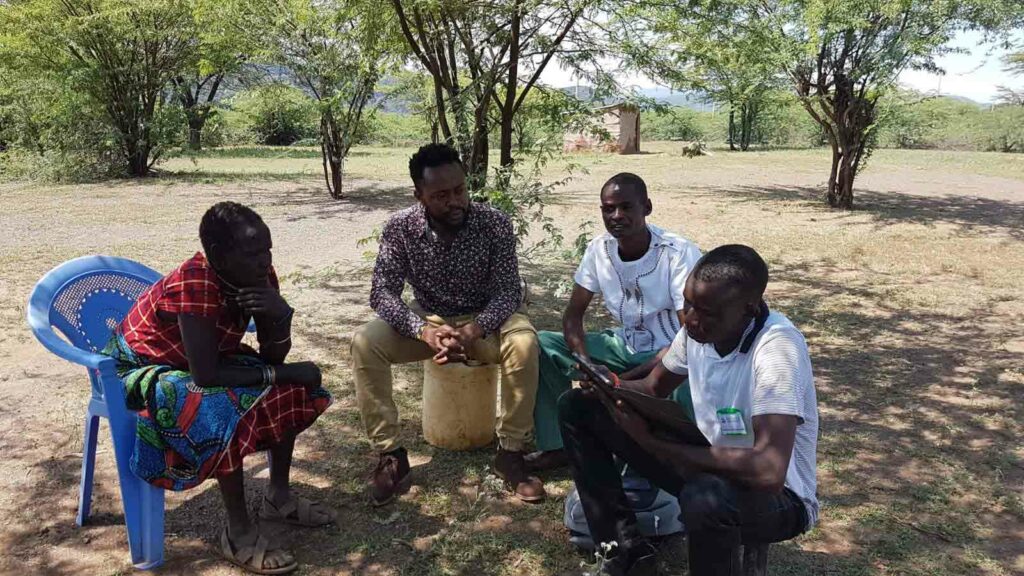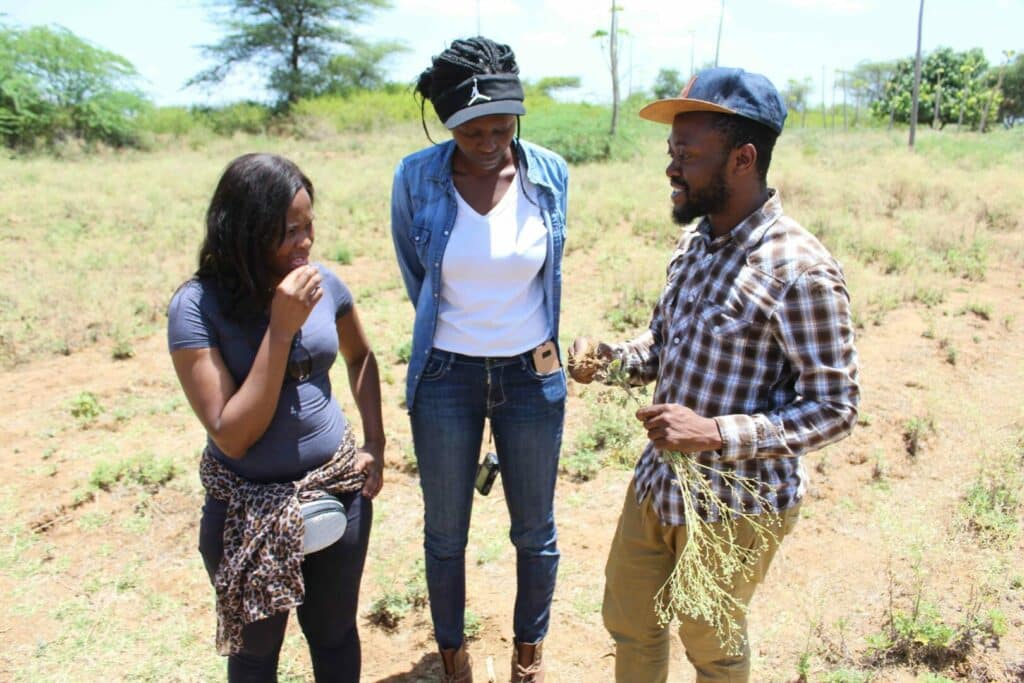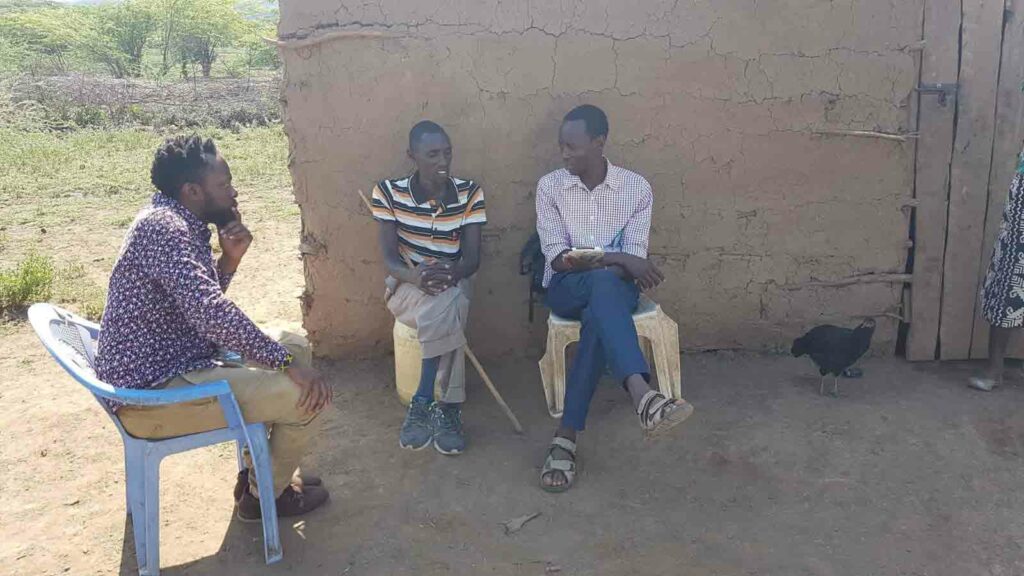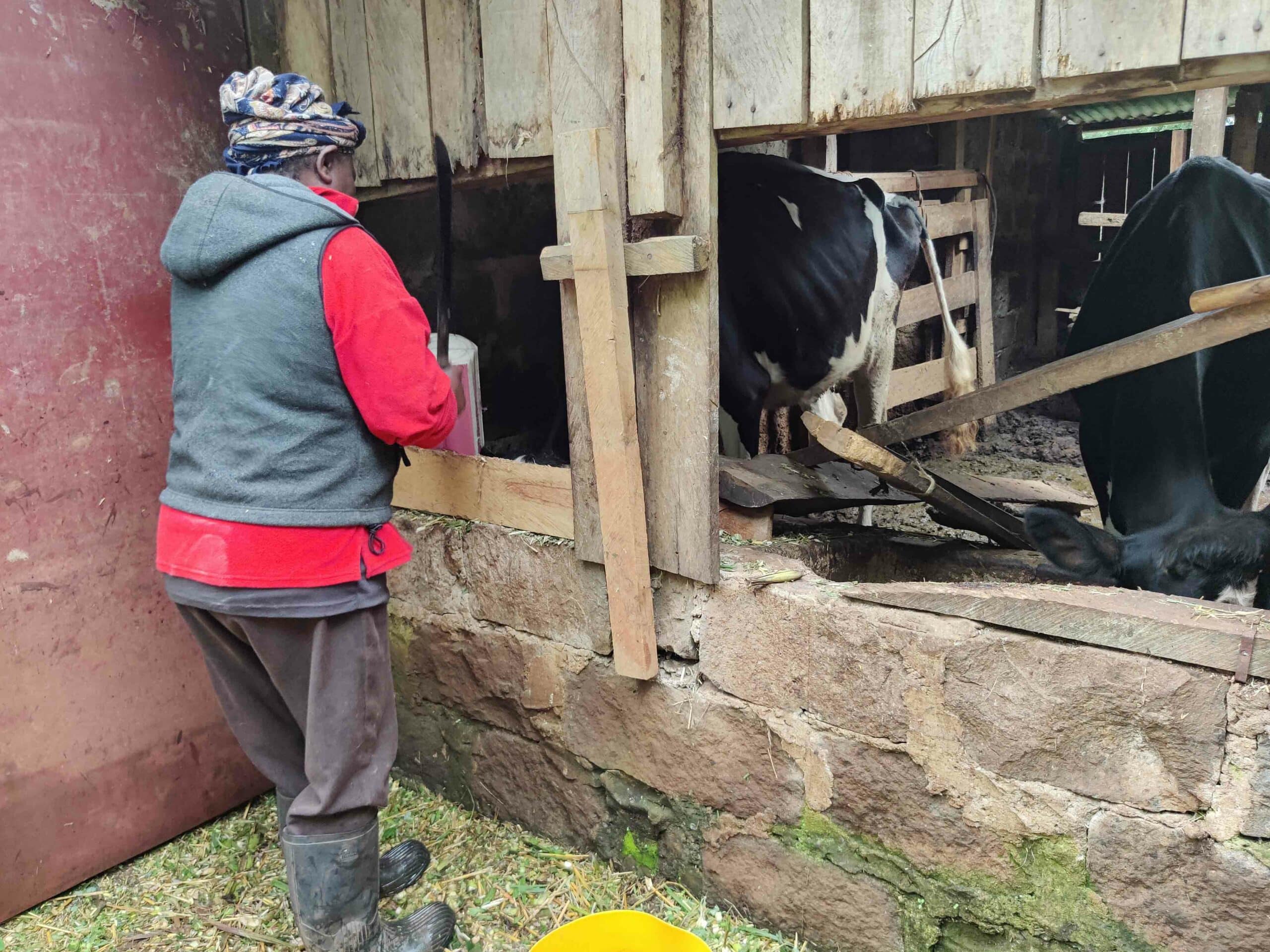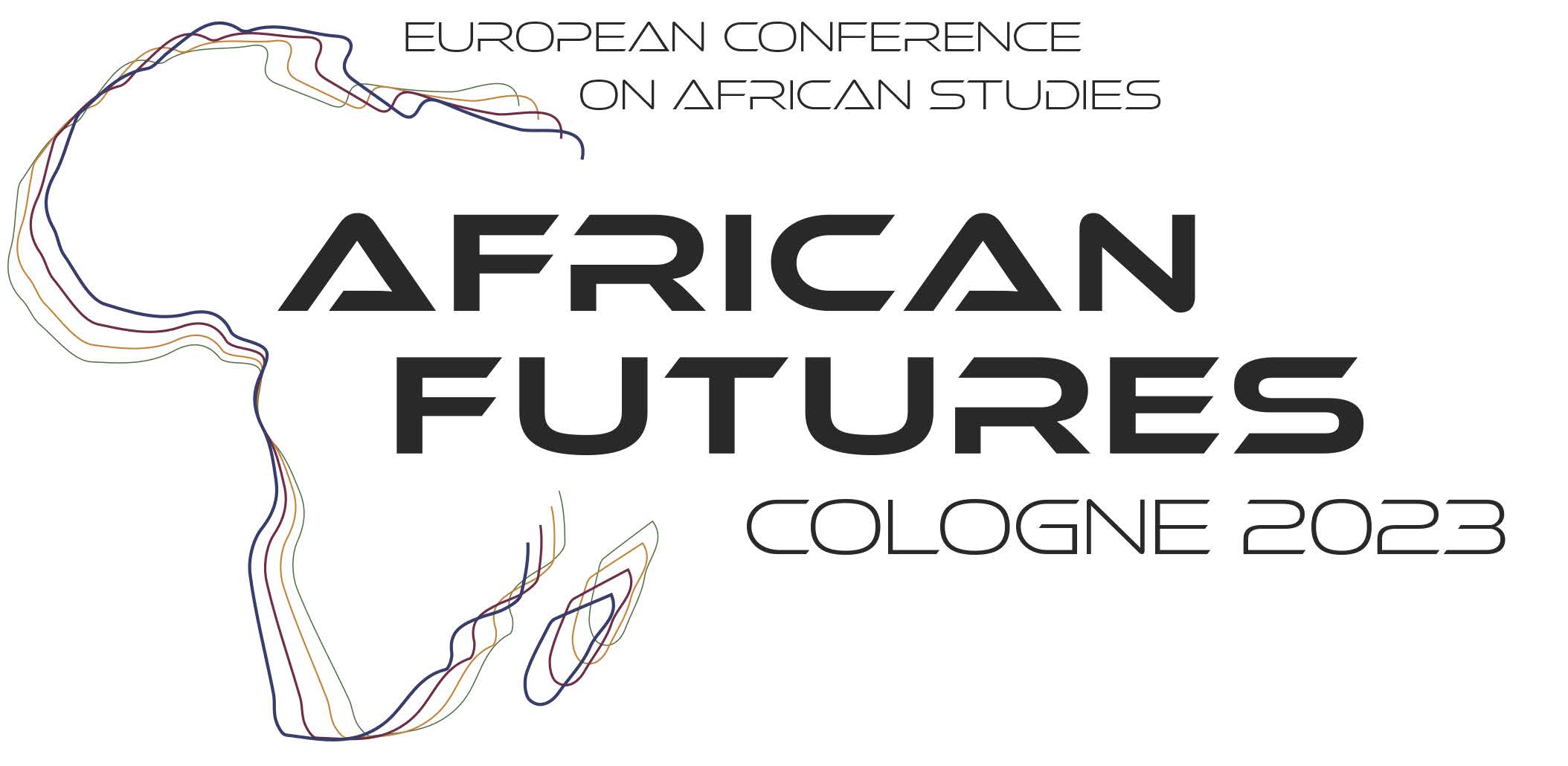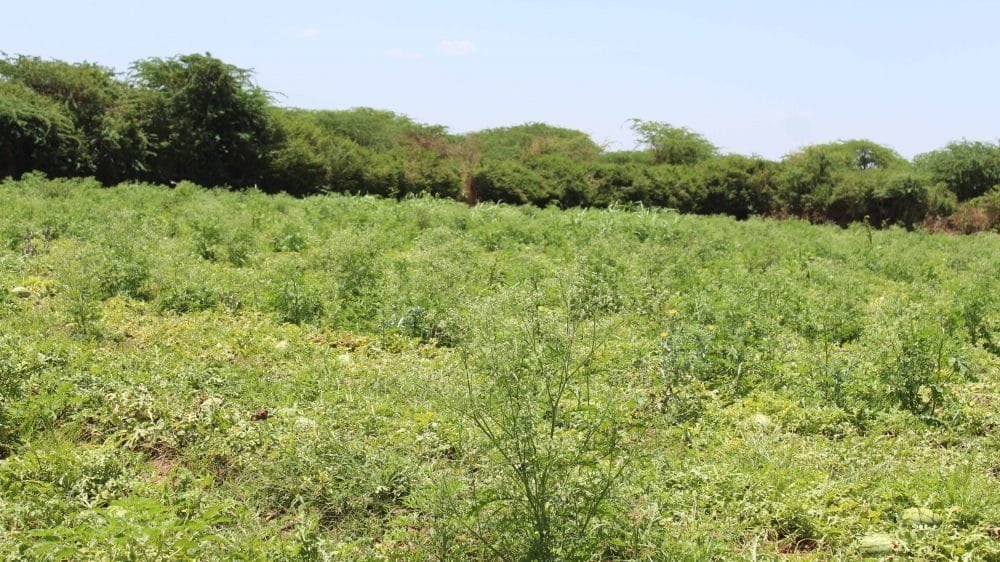CRC TRR 228 Project B01
Invasive Futures
The social ecology of rangelands in changing savanna environments
B01 Invasive Futures
Project Summary
The stewardship of rangelands in Africa is undermined by overstocking and land degradation, entailing the potential collapse of the existing social-ecological rangeland system. One key driver of rangeland degradation and their conversion to other land uses is the undesired spread of alien invasive plant species such as Parthenium hysterophorus and Prosopis juliflora. Invasion has been observed to massively accelerate in recent years, with land management and environmental conditions shaping the spread dynamics. In addition, factors that drive system shifts, such as changing people’s aspirations, policies (e.g., Community Land Act to sedentarize nomadic pastoralists), and infrastructure developments, may accelerate the spread dynamics. This uncontrolled invasion has affected both the environment and people’s livelihoods, especially pastoral households, and their capacities to cope with or respond to future risks and uncertainties. Thus, investigating the factors driving invasion and shaping land uses and rural livelihoods, as well as the effects of invasion and changing aspirations on land productivity and livelihood transformation, becomes a key element in future-making.
B01 brings together soil scientists, agronomists, and economists to assess and predict future invasive spread and systems dynamics, including agrarian changes and livelihood dynamics, in Baringo and beyond. The project examines their consequences on soil attributes (soil science), land management strategies (agronomy), and individuals’ aspirations, future-oriented investments, and livelihood transformation (economics). It uses interdisciplinary approaches to data collection and conducts comprehensive household and field surveys, focus group discussions, behavioural-economic experiments, soil sampling, and panel data analyses.
Research Regions: Lake Baringo Area, Kenya
Problem Statement
Traditional rangeland management systems and livelihoods in Kenya generally, and in the Baringo basin specifically, are slowly changing due to environmental and ecological pressures and system-immanent drivers such as rangeland degradation and changing aspirations of the land users. Invasive plant species are spreading rapidly and taking over the pastoral communal lands, hindering livestock mobility. Households are transitioning to crop agriculture to adapt to the invasion, but as arable farming expands, the seasonal availability and quality of pasture decreases, further negatively impacting agro-pastoral livelihoods. Ecological shocks such as plant invasion thus become a key element in future-making, as they will accelerate social-ecological transitions and livelihood transformative processes in future rangelands.
Key Questions
- Which resource attributes and management practices favour enhanced invasion of alien plant species?
- How does invasion affect the productivity of crop- and rangelands (e.g., forage availability and quality, crop yields) and shape future systems shifts?
- Which economic constraints, risks, and opportunities affect aspirations, and how do aspirations affect systems dynamics, including agrarian and livelihood changes, and future-related behaviour (economic mobility)?
- Which feedback processes and patterns of transformation from agrarian and livelihood changes emerge, and how do poverty and aspiration traps constitute barriers to future-making capacities? How do patterns differ across diverse agents (by gender, class, ethnicity, and other intersectional factors?
- What is the potential of role models and collective action on invasion management?
Methodology
- Analysis of digital elevation models
- Monitoring of wells
- Remote sensing soil moisture assessments
- Geostatistical modelling
- Isotopic analysis of topsoil organic matter
- Mass-spectrometric analysis of stable isotopes
- Diachronic analysis
- Analysis of fast-moving ecological threats (locusts and fall armyworm)
- Individual, household, and field surveys
- Focus group discussions
- Behavioural-economic experiments
Key Findings from Phase I
a) Invasive spread: Prosopis has been established in the area since the 1980s. It is mostly found in the seasonally inundated plains, where 65% of households report being infested. Grazed pastures had much higher infestations than frequently cropped farmlands, and semi-nomadic pastoralists and agro-pastoralist households were more impacted by Prosopis infestation than cropland farmers.
Parthenium was reported by most pastoralists and many crop farmers to be an emergent problem in the area. It invades mainly moist places, along irrigation and drainage channels, and as ruderal plant along roadsides (water runoff from tarmac roads create moist niche environments). Parthenium is likely to expand north of Marigat supporting progressing infrastructure development and system shift from (agro-)pastoralism towards sedentary crop cultivation.
b) Environmental attributes: Results indicate that high stand densities or recent spread dynamics of Parthenium and Prosopis are closely linked with high soil moisture or with larger quantities of available water in the environment. Thus, seasonal dynamics of soil moisture are related to dynamics in seed germination, growth, and stand densities of the invasive plants. The relation between species vigor and recent spread dynamics appears further to be associated with soil fertility attributes such as relatively high soil C and N contents, with low C:N ratios in the soil organic matter, and, to a lesser extent, with plant available P.
c) Impact on households and livelihoods: An economic survey collected attributes of 530 households and aspirations of farmers and (agro-)pastoralists in the face of these invasive species and the related livelihood threats. Households generally aspire beyond their current status regarding income, assets, livestock, and social status. However, ecological shocks such as massive invasion dynamics of Prosopis and the emerging spread of Parthenium have negative effects on aspirations. Education, access to agricultural extension services, and households’ wealth status are additional determinants of aspiration formation. Cooperative membership contributes positively to the formation of income and asset aspirations.
d) Response strategies and land-use patterns: Coping with risks and uncertainties entails changes in livelihood strategies and shifts in production systems. Preliminary observations indicate that practices of future-making appear to be dominated by shifts from pastoral land use towards agro-pastoralism or even intensive crop farming. However, the extent of livelihood shifts further appears to depend on resource endowments and physical, social, and educational infrastructure, with better-off actors acting as pacemakers. Men-headed households are observed to engage more and sustain their engagement in diversified livelihoods, specifically intensive crop farming and agro-pastoralism with larger livestock, while a substantial number of women-headed households (mainly widows) remain in single livelihoods, such as small-scale livestock raising. The differences in aspirations, with women having lower aspirations, are associated with these different livelihood transitions. While women may aspire to shift to invasion-adaptive livelihood strategies, they are unable to translate their aspirations into actions due to their poor endowments.
Relation to the CRC
The integrated agro-economic project on invasive futures is linked to several CRC projects – such as “Future roads” (B05) which will together study the effects of progressing infrastructure developments around Lake Baringo on the spread dynamics of invasive plants and the effects of invasive spread dynamics as push - pull factors for system shift. A GIS-based analysis of soil-moisture maps and road constructions will provide input to the model for explaining current and projecting future invasive-species distribution. Together with project on “Future Infections” (B02) the project will use the invasive-spread mapping to target studies on vector populations for of arboviral spread and the emerging risks. Invasion-related arboviral infections may constitute an additional push force that can accelerate land-use changes.
In Progress
Publications:
- Bacud, Heckelei, Ihli. The unknown link between aspiration and livelihoods: Does aspiration explain gendered livelihood diversification in pastoral settings?
- Ihli, Heckelei, Rommel, Baylis. Impact of collective action video intervention on farmers' community aspirations and cooperation in invasive species management: Evidence from an RCT in Kenya
- Mutuku, Becker, Kamiri. The role of parthenium invasion on agricultural land use change in the Njemp Flats: A change detection analysis.
Master's Theses:
- The trajectories of rural livelihoods and welfare outcomes in agro-pastoral zones in four African countries: Are farmers’ livelihood dynamics a transformation or survival process?
- Gendered perceptions of ecological degradation and preferences in control management
- Gendered impacts of invasive plant land invasion on aspirations
- Contract farming and land use dynamics – How does contract farming impact livelihood/land use dynamics of agro-pastoralists
- Aspirations and agricultural technological investments in rural Africa
- Parthenium invasion dynamics on performance attributes of selected field crops and pastures.
- Soil attributes and Parthenium invasion dynamics- How do soil fertility attributes and soil moisture patterns influence Parthenium invasion dynamics?
Accomplishments
Publications
Alvarez, M., Heller, G., Malombe, I., Matheka, KW, Choge, S. & Becker, M. 2019. ‘Classification of Prosopis juliflora invasion in the Lake Baringo basin and environmental correlations’. African Journal of Ecology vol. 57(3), pp. 296-303. DOI
Agha, SB., Alvarez, M., Becker, M., Fèvre, EM., Junglen, S., Borgemeister C 2021. ‘Invasive alien plants in Africa and the potential emergence of mosquito-borne arboviral diseases—A review and research outlook‘. Viruses vol.13, pp. 32. DOI
Alvarez, M., Curran, M. & Malombe, I. 2021. SWEA-Dataveg: A vegetation database for sub-Saharan Africa. Vegetation Classification and Survey. DOI
Tabe-Ojong, M.P., Alvarez, M., Ihli, H., Becker, M., & Heckelei, T. 2021. ‘Action on Invasive Species: Control Strategies of Parthenium hysterophorus L. on Smallholder Farms in Kenya’, Environmental Management. DOI
Tabe-Ojong, M.P., Heckelei, T. & Baylis, K. 2021. ‘Aspiration formation and ecological shocks in Rural Kenya. The European Journal of Development Research. (Online First Articles). Link
Tabe-Ojong, M.P., Mausch, K., Woldeyohanes, T., Heckelei, T. 2021. ‘Three hurdles towards commercialization: Integrating subsistence chickpea producers in the market economy’. European Review of Agricultural Economics. DOI
Tabe-Ojong, M.P. & Nshakira-Rukundo, E. 2021. ‘Religiosity and parental educational aspirations for children in Kenya,’ World Development Perspectives, Volume 23, 100349. DOI
Tabe-Ojong, M.P. 2022. ‘Ecological shocks and non-cognitive skills: Evidence from Kenya’, Ecological Economics, vol. 194, no. 107330 DOI
Tabe-Ojong, M.P., Gebrekidan, B.H., Nshakira-Rukundo, E., Börner, J., & Heckelei, T. 2022. ‘COVID-19 in rural Africa: Food access disruptions, food insecurity and coping strategies in Kenya, Namibia, and Tanzania‘, Agricultural Economics, pp. 1– 20. DOI.
Tabe-Ojong, M.P., Hauser, M., Mausch, K. 2022. ‘Does Agricultural Commercialisation Increase Asset and Livestock Accumulation on Smallholder Farms in Ethiopia?‘, The Journal of Development Studies. DOI
Tabe-Ojong, M.P., Heckelei, T., Rasch, S. 2022. Aspirations and investments in livestock: Evidenceof aspiration failure in Kenya, The Journal of the International Association of Agricultural Economics. Full Text
Tabe-Ojong, M. P., Heckelei, T., Baylis, K., Rasch, S. 2023. Cooperative membership and exposure to role models: Implications for income and asset aspirations, Journal of Behavioral and Experimental Economics, Volume 107, 2023, DOI
Tabe-Ojong, M.P., Kedinga, M.E. & Gebrekidan, B.H. Behavioural factors matter for the adoption of climate-smart agriculture. Sci Rep 14, 798 (2024). DOI
Master's & Bachelor's Engagements
Gardner, E. Forest Incomes: A Means to Achieve Aspirations and Move Out of Poverty? (2022 November). Summary
Ndikumwenayo, M. Recent changes in cropping practices in the face of invasive plant species in Baringo, Kenya (March, 2024)
Momanyi, E. Resource Competition of Invasive Weed Parthenium hysterophorus on Selected Field and Pasture crops in the Njemps flats, Baringo County.
Conferences & Working Papers
Conference contributions / Working papers / Papers under review
Alvarez, M., Kiboi, S., Becker, M. & Malombe, I. 2019. ‘Modelling potential dispersal of Prosopis juliflora in East Africa: Scaling and assembling correlations‘. Presentation at EMAPi, Prague.
Sainepo, B., Alvarez, M. & Becker, M. 2021. ‘Impact of Parthenium hysterophorus invasion on plant species composition and soil properties in grassland communities in the Njemps flats, Kenya’. Paper to be presented at the Joint International Grassland Congress/International Rangeland Congress 2021 virtual conference, August 2021.
Sainepo, B., Tabe-Ojong, M.P., Kiboi, S., Malombe, I., Becker, M., Heckelei, T. & Alvarez, M. 2019. Parthenium hysterophorus in East Africa: a numerical review’. Presentation at EMAPi, Prague, Czech Republic
Tabe-Ojong, M.P., Heckelei,T & Baylis, K. 2020. ‘Aspiration formation and ecological shocks: An exploratory analysis in rural Kenya‘. Paper presented at the Annual Meeting of the American Applied Economics Association (AAEA), Kansas City, July 26-28.
Tabe-Ojong, M.P., Heckelei, T. & Baylis, K. 2020. ‘Collective action and smallholder rural households: Implications for income and asset aspirations‘ Paper presented at the Annual Meeting of the American Applied Economics Association (AAEA) in Kansas City, July 26-28
Tabe-Ojong, M.P., Heckelei, T., Baylis, K. & Rasch, S. ‘How does collective action affect the aspirations of smallholder households?’ (working paper) Access Link
Tabe-Ojong, M.P., Rasch, S. ‘Income aspirations and livestock savings: Evidence of aspiration failure in Kenya’ (working paper) Access Link
Tabe-Ojong, M.P., Ihli, H., Alvarez, M., Becker, M., Heckelei, T. 2021. ‘Action on invasive species: control strategies of Parthenium hysterophorus L. on smallholder farms in Kenya’ (under review) Access Link
Tabe-Ojong, M.P. et al Coping with locusts and COVID-19 in rural Africa: An analysis of household-level coping strategies to food insecurity (under review) Access Link

